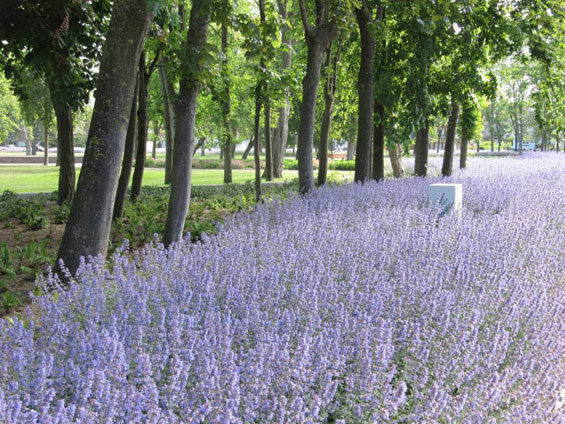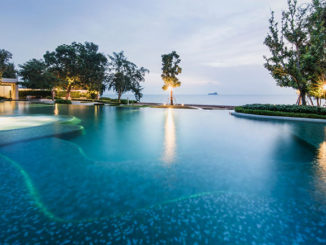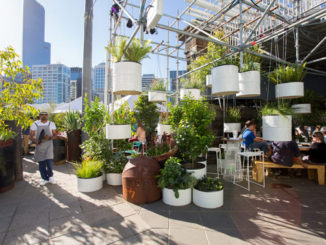The Leopold Park renovation is a case whereby creative planning and design can deal with some aspects of climate change. A range of actions and techniques are available for managing flood risks in parks: green roofs, sustainable drainage, flood pathways, temporary water storage, or upland-land management. Strategies for managing high temperatures in green spaces can be the use of open water and water features, cool pavement materials and shade. Water reservoirs help to ensure sufficient water supplies during dry summers, or low-water-use-planting can reduce water demand. Vegetation management, including careful choice and placement of trees and vegetative cover, in combination with re-grading or re-inforcing of slopes, to reduce risk of erosion and landslips.
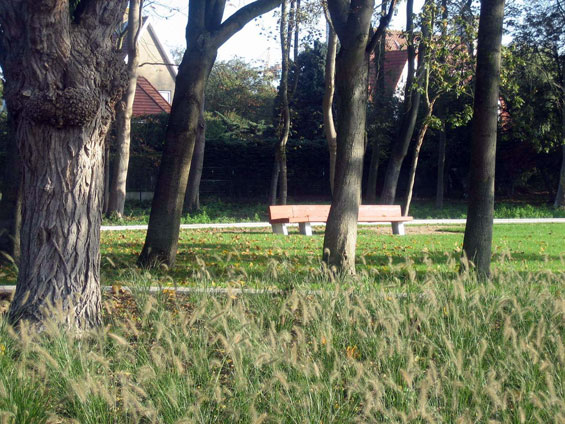
Concept
In the new concept is water-experience the key-word, including water recreation such as canoeing or the water playground. The inclusion of the wide canal shore zones, with the most potential nature values is also a green binding agent between the urban tissue and the natural environment as a transitional area to the polder landscape that lies behind.
The park is to be considered as a multi-functional open area: people can relax in summer, but the park can also act as flood-defences in periods of heavy rain. The park must manage also high temperatures and reduce the impacts of floods and droughts and play a role in improving air quality and preserving biodiversity. The lawns need to be well maintained to be effective: if a drought makes grass dry and bare, it will have less of a cooling effect;

Nature-oriented Management
Zeroscaping is a low-water landscaping philosophy which places a heavy focus on using native plants and succulents. On a selected number of spots, there are shrubs with more colour, flower, leaf or fruit. This creates an attractive image for all seasons of the year. Flower beds are also restored and planted with strong perennials that spread over the year for a striking colour accent. Early spring bulbs like Narcissus, Crocus and Muscari are covering the park lawns in colourful flower carpets during springtime. A branches wall as part of the closed minerals circuit provide a habitat for biodiversity: pruning wood will remain in the park as nature wall fence and hiding place for insects and small animals.
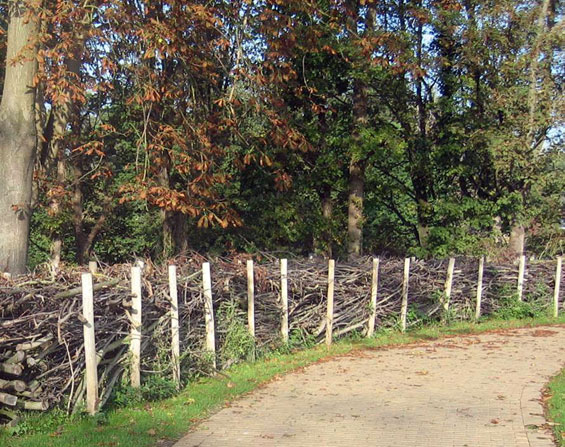
Tree Management
The richly varied trees are one of the most important qualities of the park. There were never new plantations after the construction in 1955, and management was also not focused on making the park rejuvenation a meadow seemed more than on trees a nuanced, weighed park with sight lines and open grass parties. Planting drought-resistant-trees or plants is not the answer to climate change: instead methods which allow rainwater harvesting or groundcover with plants, foils and wood clippings can prevent a dry soil and prevent weeds without pesticides.
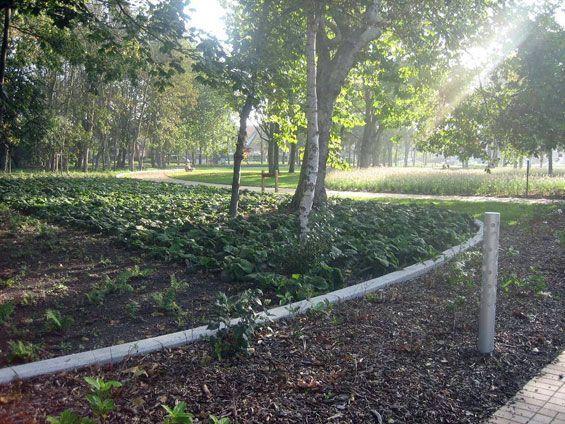
Environmentally sensitive practices
Increased heat in urban cities will increase people’s desire to move out of cities: improving the quality of green urban spaces can reduce this. Climate change and new demands towards public green spaces presents challenges and also enormous opportunities to create innovative green spaces that will be attractive while functioning well, as the climate changes;
In example: the park has now a number of clear entrances. A new main park access puts the link to the city centre. All the entrances are now inviting and fitted with benches, safety lighting, bicycles parking and information boards.
Two new covered bus stops are provides and street crossings are equipped with road marks and pedestrian crossings. Improving the quality of the infrastructure can encourage people to walk or cycle rather than use cars.
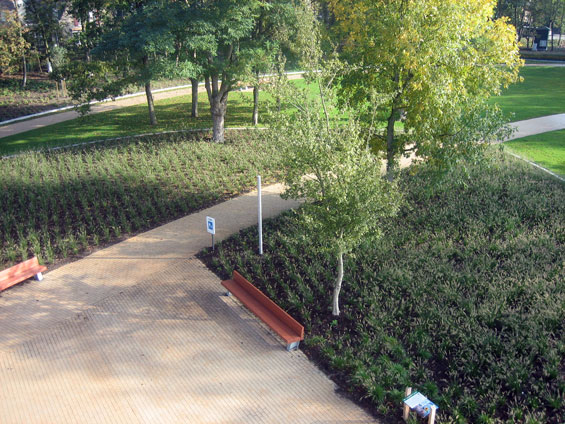
Participation
The city of Nieuwpoort organized for the first time in its history a large-scale ask around-by means of a questionnaire – the needs, desires, interests and patterns of the park users. Inhabitants, society, schools, councils,…. everyone participated.
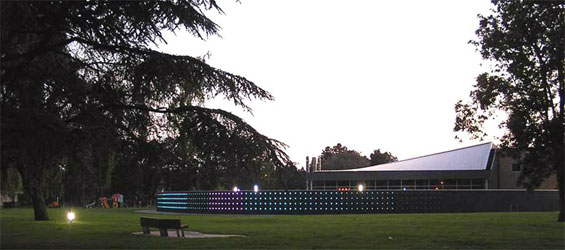
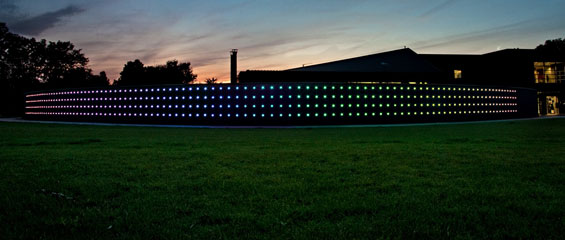
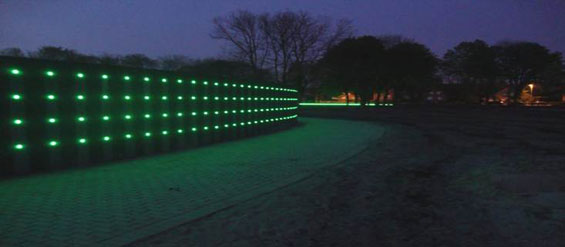
The park is focussed on offering incentives: sight, smell, hearing, touch and taste. By the choice of the plants visitors can enjoy all the senses of nature. But plants and trees will become more susceptible to new insects and diseases. Poor air and soil quality combined with pests will affect the vitality of trees and vegetation and effecting the costs of maintenance. Good quality research and guidance will help park managers understand the implications of climate change and help them avoid costly mistakes.
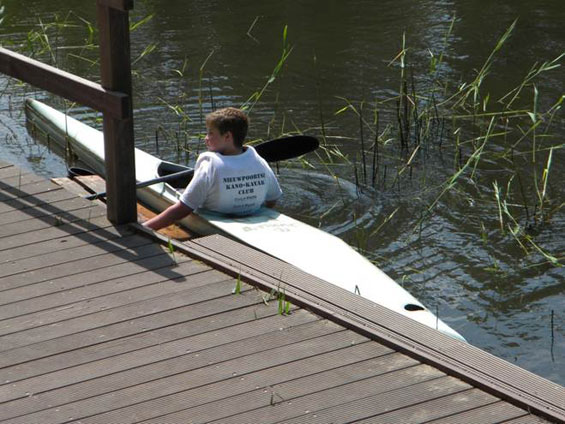
Recreation
In the concept was chosen for a maximum use of water recreation such as swimming, fishing and canoeing. This water bound recreations were in consultation with several associations. The playground is now decorated with fountains and spraying possibilities. The Leopold Park now provides a marvellous stage for healthy lifestyle activities, which is an important new demand towards public green spaces.
Leopoldpark | Nieuwpoort Belgium | Alain Cappelle
Landscape Architect | Alain Cappelle
Image and text credits: Alain Cappelle

